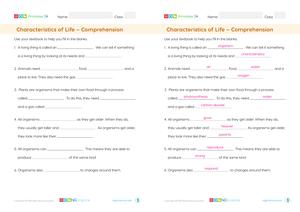Begin with a captivating discussion on how the human body is a complex system made up of trillions of cells. Highlight the diversity and specialization of these cells.
Go to the LessonLearning Objectives
- Understand that most organisms are multicellular and composed of different types of cells.
- Recognize that the shape, size, and location of cells are related to their specific functions in multicellular organisms.
- Identify various types of cells in the human body and their roles, such as muscle cells, bone cells, skin cells, and blood cells.
- Explain how different cells work together to help the organism function as a system.
- Describe the human body as a complex system with specialized cells working collaboratively to maintain health and function.
Introduction and Hook
Direct Instruction
Explain how different types of cells in the human body, such as muscle, bone, skin, and blood cells, have specific functions and how their shape and size relate to these functions.
Discuss the collaborative nature of cells in maintaining the health and function of multicellular organisms, using examples from the human body.
Guided Exploration
Engage students in identifying various types of cells and their functions through interactive activities or digital simulations.
Use diagrams and models to visualize cell structures and their roles within the human body.
Hands-On Activity
Conduct an activity where students observe animal cells using microscopes, drawing and describing their observations.
Facilitate a discussion on how the observed cell structures relate to their functions in multicellular organisms.
Independent Practice
Assign students to research and present on a specific type of cell in the human body, detailing its structure, function, and importance.
Check for Understanding
Review and Reflection
Reflect on how different cells work together to form tissues, organs, and systems, using the human body as an example.
Encourage students to share what they found most interesting about multicellular organisms and their cells.
Assessment and Extension
Conclude with a quiz to test students' understanding of multicellular organisms and the roles of different cells.
Try the QuizFor further exploration, provide an assessment pack that includes activities on cell organization and classification of organisms.
Get the Assessment Pack


